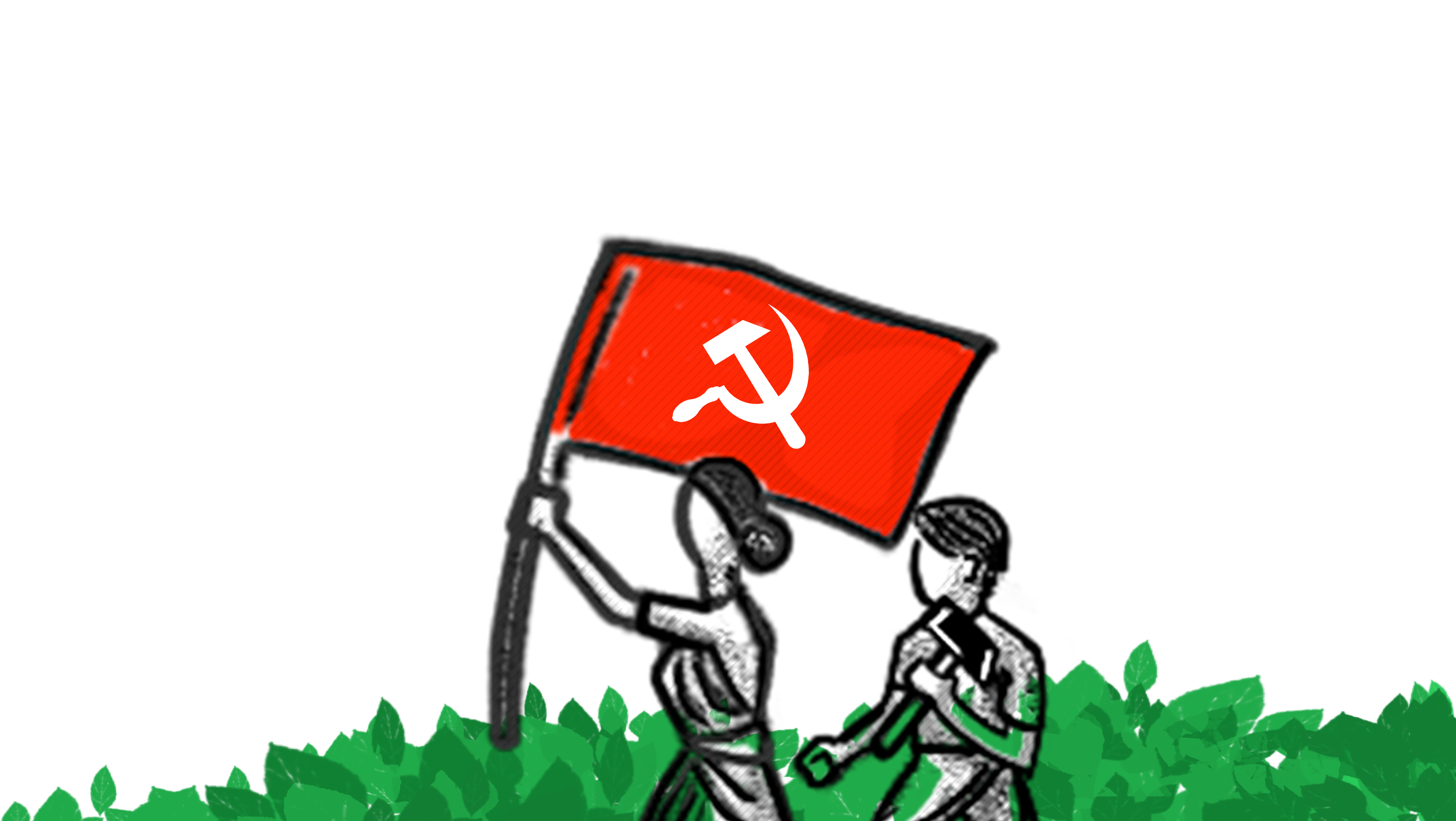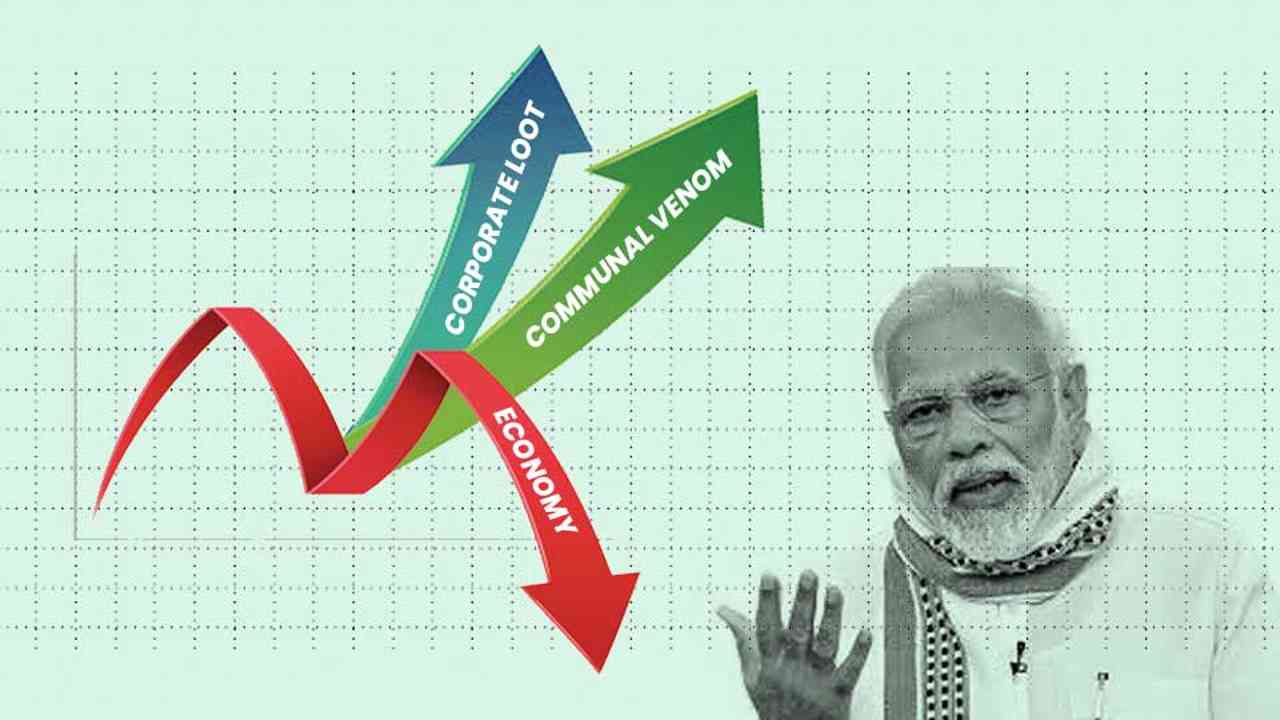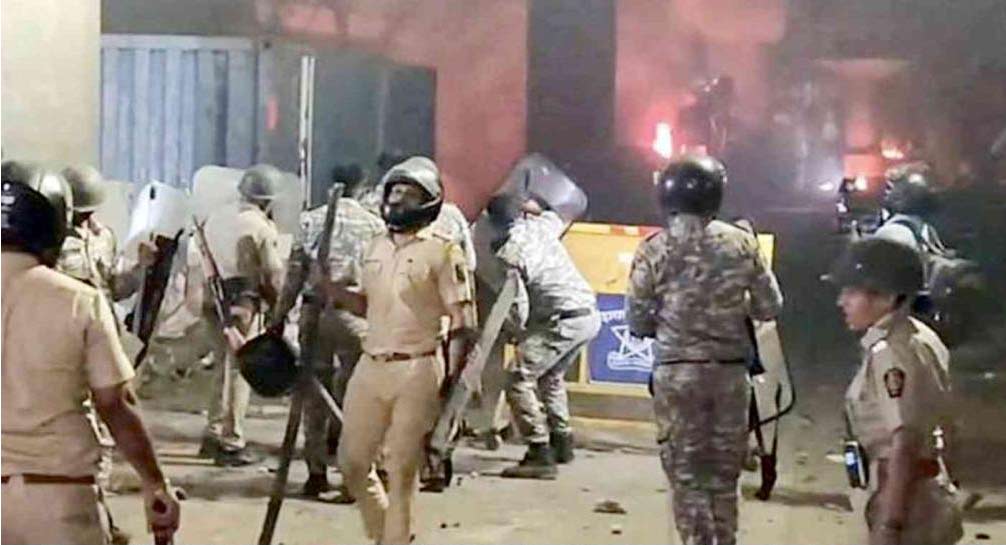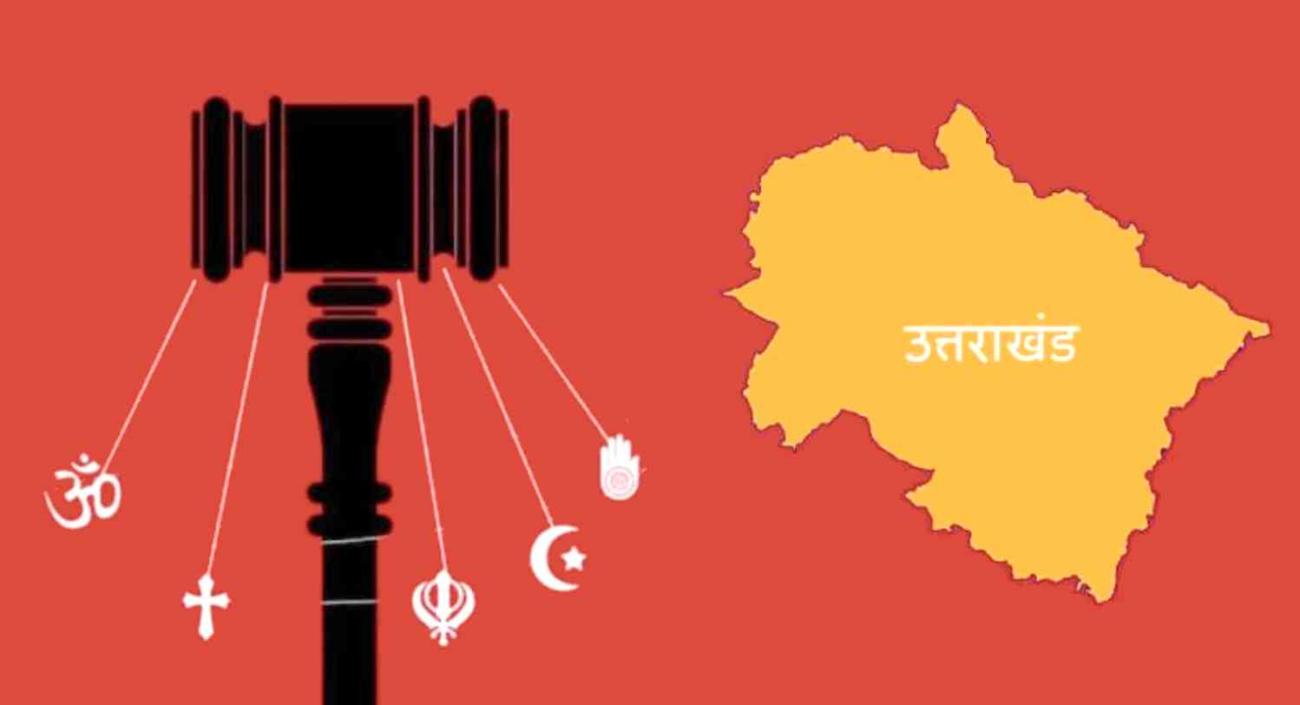This self-congratulatory propaganda rests usually on two props - provisional figures of a modest growth in GDP and rise in GST collections. The figures are still provisional but the government and the cheerleader media have already begun to beat the drums. The first thing that we must remember is that the 6.5-7% growth being claimed now has been preceded by a massive shrinking of the GDP during the Covid period which means India is only recovering from the pandemic-period decline. Secondly, the current growth is still unstable and highly uneven. In sectoral terms, the growth is concentrated in just three sectors - service, construction and tourism. In terms of income brackets, the top 20% is driving the growth while people in the bottom 80% are sinking further into poverty. This skewed pattern of recovery thus resembles the shape of the letter K in the English alphabet.
The Oxfam report 'survival of the richest' (perhaps even better named festival of the richest) gave us a shocking picture of this skewed growth earlier this year. The number of billionaires grew sharply from 102 in 2020 to 166 in 2022. Forty percent of the wealth created in India between 2012 and 2021 went to just one percent of the population and only a mere three percent of the wealth to the bottom 50 percent. Private consumption, especially mass consumption of essential goods and services, has failed to pick up because of falling income and erosion of purchasing power. Sales of two-wheelers and entry-level passenger cars have declined while expensive cars and other items of luxury consumption are selling more.
This extremely skewed pattern of wealth distribution is reinforced by the pro-rich taxation and banking systems. There is no wealth or inheritance tax in India while the effective corporate tax rate has been on the decline. The banking system has been increasingly geared to the interests of the rich. Mega defaults, loan write-offs, and bailout packages all turn the banking system into an instrument of increased concentration of wealth in the hands of the ultra-rich. The rise and crisis of the Adani group provides a tell-tale example of the misuse of public money for private gains. The rapid and spectacular rise of the Adani group basically meant a transfer of India's infrastructure from public hands to Adani's control and now, after the Hindenburg report has triggered a spectacular fall of the Adani group, we once again see public financial institutions like LIC and SBI being sacrificed to save the Adani empire.
While India faces major economic challenges, the Modi government does not just deny the hard economic reality but seeks to suppress it by sharpening communal polarisation and scapegoating minorities across India. A miracle baba was brought to Bihar to launch a campaign for Hindu Rashtra. In Maharashtra, anti-Muslim violence is being orchestrated by vilifying historical figures like Tipu Sultan and Aurangzeb and even maligning NCP leader Sharad Pawar as a reincarnation of Aurangzeb. In Uttarakhand where the BJP government faces mass indignation over the Joshimath crisis, job scam and murder of a young woman Ankita Bhandari, the Sangh brigade has resorted to full-scale ethnic cleansing, launching a violent campaign to close down Muslim shops and expel Muslims, raising the bogey of 'love jihad' and 'land jihad' and calling for saving the 'Dev Bhoomi' from so-called 'jihadis'. By decimating communal harmony and fraternity this toxic politics also deepens India's economic crisis and jeopardises India's national unity and stability as a constitutional republic. Karnataka defeated this design in the May elections, the whole of India must now get ready to foil the fascist agenda.





